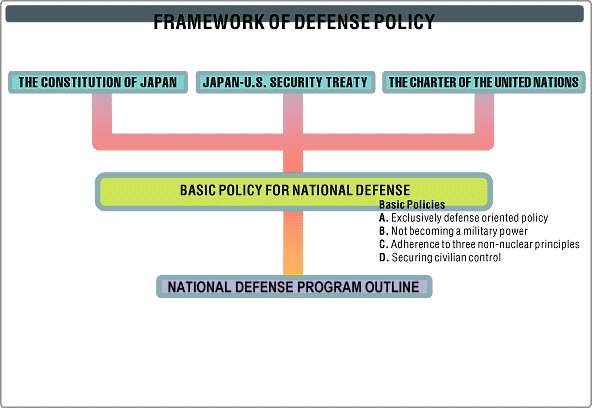|
Intended to deter attack, repulse a small invasion, or provide a holding action until reinforced by United States armed
forces, the ground element is neither equipped nor staffed to offer more than a show of conventional defense by itself. Antitank
artillery, ground-to-sea firepower, and mobility were improved and surface-to- ship missiles were acquired in the Mid-Term
Defense Estimate completed in FY 1990. The number of uniformed personnel is insufficient to enable an immediate shift onto
emergency footing. Instead, the ratio of officers to enlisted personnel is high, requiring augmentation by reserves or volunteers
in times of crisis. In 1992, however, GSDF reserve personnel, numbering 46,000, had received little professional training.

During the mid-1990s the GSDF consisted of one armored division, twelve infantry divisions, one airborne brigade, two combined
brigades, four training brigades, one artillery brigade with two groups, two air defense brigades with three groups, one helicopter
brigade with twenty-four squadrons, and two antitank helicopter platoons.
The GSDF is divided into five regional armies [the JGSDF uses a term that literally translates as "direction party"], each
containing two to four divisions, antiaircraft artillery units, and support units. The largest, the Northern Army, is headquartered
on Hokkaido, where population and geographic constraints are less limiting than elsewhere. It has four divisions and artillery,
antiaircraft artillery, and engineering brigades. The Northeastern Army and the Eastern Army, headquartered in Sendai and
Ichikawa, respectively, each has two divisions. The Middle Army [Central Army], headquartered in Itami, has three divisions
in addition to a combined brigade located on Shikoku. The Western Army, with two divisions, is headquartered at Kengun and
maintains a combined brigade [Mixed Group] on Okinawa.
There are two types of divisions [the JGSDF uses a term that literally translates as "teacher group"] in accordance with
the personnel strength. They are a 9,000-man Division and a 7,000-man Division which are composed of a division headquarters,
three to four infantry regiments, an artillery regiment, a tank battalion and other units. The organization of a division
is standardized because of its role of conducting systematic defense operations in any part of Japan.
A brigade is a unit combined with various types of forces, including combat units, such as infantry, armored and artillery
units, combat support units and logistical support units. It is a regionally independent and permanent entity. Though its
function is similar to a division in that it possesses the capability to engage in operations on one front, it is smaller
than a division in scale and has limited capability. (A division in principle consists of 6,000 to 9,000 personnel, whereas
a brigade in principle consists of 3,000 to 4,000 personnel.
|

